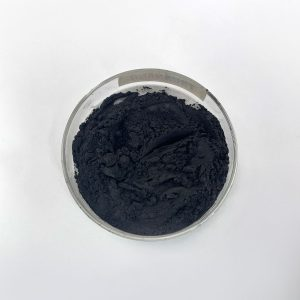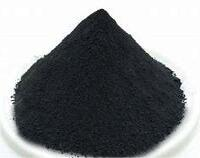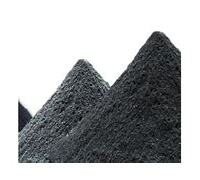1. Introduction
Titanium powder might sound like something out of a sci-fi movie, but it’s very real—and incredibly useful. From aerospace to medical implants and cutting-edge 3D printing, titanium powder is a cornerstone material in modern advanced manufacturing. Whether you’re looking to buy titanium powder for research, industrial use, or additive manufacturing, understanding its types, properties, and market dynamics is essential.

In this guide, we’ll break down everything you need to know about titanium powder—including its variants like ti powder, ti6al4v powder, and tio2 powder—plus pricing insights, key applications, and how it stacks up against other metal powders like molybdenum and tungsten.
2. What Is Titanium Powder?
Titanium powder refers to finely divided particles of titanium metal or its compounds. It comes in various forms: pure titanium powder, titanium alloy powder (like the widely used Ti6Al4V or Ti64 powder), and ceramic derivatives such as titanium nitride powder, titanium carbide powder, and tio2 nano powder.
Depending on how it’s made, titanium powder can be irregular (like HDH titanium powder) or spherical (gas atomized titanium powder), which affects its flowability and suitability for processes like 3D printing.
2.1. Common Types of Titanium Powder

- Pure titanium powder: High-purity Ti used in chemical and biomedical applications.
- Ti6Al4V powder (also called Ti64 powder): The most common titanium alloy powder, ideal for aerospace and medical 3D printing.
- TiO2 powder: Titanium dioxide, widely used in pigments, sunscreens, and coatings—not metallic, but often grouped with titanium powders.
- Titanium nitride powder and titanium carbide powder: Hard, wear-resistant ceramics used in cutting tools and coatings.
- TiB2 powder (titanium diboride powder) and titanium boride powder: Ultra-hard materials for armor and refractory applications.
- TiH2 powder: Titanium hydride, often used as a foaming agent or precursor in powder metallurgy.
- Titanium flash powder: A pyrotechnic mix (not pure titanium) used in special effects—handle with extreme caution.
- Titanium coated diamond powder: Used in high-performance grinding and polishing.
- Burnt titanium powder coat: Refers to oxidized surface layers, not a standard commercial product.
3. How Is Titanium Powder Made?
The two dominant production methods are Hydride-Dehydride (HDH) and gas atomization.
HDH titanium powder is cost-effective and produces angular particles—great for pressing and sintering but less ideal for 3D printing. Gas atomized titanium powder, on the other hand, yields spherical particles with excellent flow, making it the go-to for titanium powder additive manufacturing.

Other methods include plasma rotating electrode process (PREP) and electrolysis, though these are less common due to cost or scalability issues.
4. Titanium Powder Uses
Titanium powder uses span multiple high-tech industries:
- Aerospace: Lightweight, strong components via 3D printing.
- Medical: Biocompatible implants (hips, dental fixtures) made from ti6al4v powder.
- Automotive: Performance parts requiring high strength-to-weight ratios.
- Chemical processing: Corrosion-resistant reactors and valves.
- Additive manufacturing: Titanium 3d printing powder enables complex geometries impossible with traditional machining.
Specialty powders like titanium nanopowder or tio2 nano powder find roles in catalysis, sensors, and UV-blocking coatings.
5. Titanium Powder for 3D Printing
Titanium powder for 3D printing must meet strict standards: high purity, spherical morphology, and controlled particle size (typically 15–45 microns).
Gas atomized titanium powder is preferred here due to its excellent flow and packing density. Ti6Al4V powder dominates this space because of its balance of strength, weldability, and biocompatibility.
When evaluating titanium powder for 3d printing price, expect to pay significantly more than for HDH powder—often 2–5x higher due to processing complexity.
6. Titanium Powder Pricing and Suppliers
Titanium powder price varies widely based on type, purity, particle shape, and volume. As of 2024, titanium powder price per kg ranges from $50–$150 for HDH-grade pure titanium powder, while spherical ti6al4v powder price can exceed $300–$500/kg.
Factors affecting titanium metal powder price include raw material costs (titanium sponge), processing method, and certification requirements (e.g., ASTM or AMS standards for aerospace).
Reputable titanium powder suppliers include international titanium powder producers like Allegheny Technologies, VSMPO-AVISMA, and smaller specialty vendors catering to labs and startups. Always verify certifications before you buy titanium powder.
Note: Titanium powder for sale online may seem cheap—but beware of mislabeled or contaminated products, especially when sourcing titanium dust or nanopowder.
7. How Titanium Powder Compares to Molybdenum and Tungsten Powders
While titanium powder excels in lightweight strength, molybdenum powder and tungsten powder serve different niches.
Molybdenum metal powder (moly powder) is used in high-temp furnaces, electronics, and alloys like TZM powder. Common variants include molybdenum disulfide powder (MoS2 powder)—a dry lubricant—and molybdenum carbide powder. Molybdenum powder price is generally lower than titanium’s, but applications differ significantly.
Tungsten powder, especially pure tungsten powder or spherical tungsten powder, is ultra-dense (tungsten powder density ~19.3 g/cm³) and used in radiation shielding, weights, and tungsten carbide powder for cutting tools. Tungsten powder price per kg is competitive, but fused tungsten carbide powder commands premium pricing.
Suppliers like Global Tungsten & Powders Corporation (also known as Global Tungsten and Powder) dominate the tungsten market, while molybdenum powder suppliers cater to niche industrial sectors.
In short: titanium = light and strong; molybdenum = heat-resistant; tungsten = heavy and hard. Choose based on your application—not just cost.
8. Safety and Handling
Fine titanium powder can be pyrophoric—meaning it may ignite spontaneously in air, especially nanopowder or freshly milled dust. Always store in inert atmospheres and follow OSHA guidelines.
Never confuse titanium metal powder with tio2 powder (titanium dioxide), which is generally safe and used in food and cosmetics (though nano forms are under regulatory review).
9. Conclusion
Titanium powder is a versatile, high-performance material driving innovation in 3D printing, aerospace, and medicine. Understanding the differences between pure titanium powder, ti64 powder, and specialty compounds like titanium diboride powder is key to selecting the right material. While titanium powder cost can be steep—especially for spherical, 3D-printing-grade material—the performance benefits often justify the investment. Always source from trusted titanium powder suppliers and prioritize safety when handling reactive metal powders.
Our Website founded on October 17, 2012, is a high-tech enterprise committed to the research and development, production, processing, sales and technical services of ceramic relative materials such as Titanium. Our products includes but not limited to Boron Carbide Ceramic Products, Boron Nitride Ceramic Products, Silicon Carbide Ceramic Products, Silicon Nitride Ceramic Products, Zirconium Dioxide Ceramic Products, etc. If you are interested, please feel free to contact us.
